Some have fled, others await an economic revival as Beaver County’s first major industrial plant in decades is activated this year.
The 386-acre factory emerging from a modest western Pennsylvania town is hard to miss. Cruising along the interstate, visitors are transfixed by the plant's presence – its tallest structure soaring 300 feet above the Ohio River and its intense glow reflected in the tributary below.
Shell’s $6 billion petrochemical complex, built to manufacture plastic pellets using natural gas, dominates the landscape and the thoughts of Beaver County residents. Set to go online this year, its arrival has already prompted some to make weighty, life-changing decisions.
Lifelong homeowners have fled, dreading more industrialization and its environmental health risks. Others have become citizen scientists, arming themselves with air-quality monitors and lessons from the Gulf Coast's "Cancer Alley."
Many wait with intrigue, certain Beaver County – devastated by the 1980s steel collapse – will again flourish thanks to Shell’s investment.
Behind the story:Behind the story: How we cracked the tale of Beaver County's Shell plant
The region is no stranger to industry. Most locals remember smokestacks and blast furnaces lining the riverfronts and molten slag lighting the hills at dusk. When the steel mills shuttered, Beaver County faced sharp population decline and a shaky tax base that's still felt today.
But a decade ago, the county was promised a lofty economic revival when Shell, fiercely courted and invariably embraced by politicians, garnered $1.7 billion in state tax credits to build Appalachia's first major petrochemical facility in Potter Township. Touting thousands of temporary construction jobs and an influx of ancillary businesses, lawmakers awarded Shell one of the largest incentives in Keystone State history estimated to save the company about $66 million a year.
Outspoken critics argue many of those promises have yet to be fulfilled, with supporters insisting the gains are clear.
After years of rhetoric, residents are looking for clear-eyed perspectives. Some guidance may be found from people well-versed in living near a similar plant hundreds of miles away.
‘You take the good with the bad’
Pat Anderson’s emergency go-bag is stashed neatly under his no-frills platform bed.
Sifting through the military surplus duffel designed for quick evacuation, Anderson flashes a mass of family photos, identity records and “a few days’ clothes.” A “recovering” auto mechanic from Chicago who has since moved 60 miles southwest to Grundy County, Illinois, 62-year-old Anderson doesn’t feel the need to include food or medical aid.
“I have cousins up in the city, so I wouldn’t have to drive far if I had to leave,” he said. “I just have the essentials ... birth certificate, Social Security card, valuables. It’s just a peace-of-mind thing, knowing it’s all in one place.”
Anderson recently settled into a ranch-style home off U.S. Route 6 near Morris, a city of more than 14,000 residents along the Illinois River.
Morris touts sprawling wetlands, a distinctive downtown and a storied industrial past.
It’s also home to one of the largest petrochemical plants in the Midwest ― just a mile from Anderson’s driveway.
LyondellBasell’s Morris Complex has converted natural gas to polyethylene, or plastic, for more than 50 years. Flanked by undeveloped prairie and family homes, it’s among just a handful of “ethane cracker” plants located outside of Louisiana and Texas.
By now, Anderson is used to the factory’s restless whir and the imposing steam plumes flowing from its cooling towers. Wind sometimes carries the vapor cloud across Route 6, he said, obscuring the taillights ahead.
Anderson hadn’t considered packing a go-bag until May 2011, when a storm-related power outage at the 700-acre LyondellBasell site prompted emergency responders ― fearing an explosion caused by chemical pressure ― to evacuate more than 100 nearby residents.
"I lived a few miles away then, and they told me I wasn't at any risk," he said. "So I stayed put. I was just calling around trying to see if anyone needed help."
Prior to that Sunday afternoon, there hadn’t been an evacuation at the Lyondell plant since 1989. Grundy County Emergency Management officials later reported a small explosion and fire at the site.
Residents returned home that evening with no reported injuries, but the event left its mark on Anderson.
“It just made me realize it’s a smart thing to do, be prepared for disasters," he said.
Fewer than 500 miles east of Morris in Beaver County, residents are preparing for Appalachia’s first major petrochemical facility on the banks of the Ohio River. Attracted by an abundance of local ethane and lower transportation costs ― 70% of the company’s customer base is in the Northeast ― Shell will produce 1.6 million metric tons of polyethylene each year to be used in products like food packaging and auto parts.
More:Shell safety team prepares for summer cracker plant opening
Beaver Countians, having little say in the company’s initial arrival, have responded with everything from hope to dismay. For them, Anderson has blunt, practical advice.
“It feels like it's part of life,” he said. “You take the good with the bad and prepare for both.”
‘What we’ve been traded for’
Shell's vast chemical plant has already driven some away from Beaver County.
Christy Begley still mourns the Center Township home she reluctantly sold last year, leaving behind traces of her daughter’s childhood, deep-seated friendships and a beloved sunflower garden. She and her husband left after 20 years in response to the larger-than-life factory ascending a mile from their front yard on Warwick Drive.
Begley, the daughter of a steelworker, watched the site transform from a dirty century-old zinc smelter, at one time the state’s top toxic polluter, into what it is today. Shell invested $80 million to demolish the smelter and remediate the land for development, moving hillsides and realigning a mile of adjacent highway.
Frustrated by what she said was dust wafting into her home during construction, and alarmed by the prospect of more industrial pollutants flooding the air, she put her house on the market last summer. It sold in three days.
More: Proposed Shell cracker plant location in Potter Twp. has a long history
“I loved that house. It was paid off, and we had no intention of moving,” Begley said. “My neighbors watched my daughter grow up. But before the plant came, I would sit on my porch in the evenings and it was quiet and dark, I could look at the stars. But it wasn’t like that anymore. It looked like the sun was coming up over there all the time.”
She often considers driving by her old house. "No," her husband tells her.
"Because he knows I'll cry,” Begley said.
When she learned Shell is authorized by Pennsylvania’s Department of Environmental Protection to annually emit hundreds of tons of air pollutants such as benzene and formaldehyde ― the highest permitted emissions in the region ― Begley started searching for a new place to live. She worried Beaver County might in time have its own “Cancer Alley,” a stretch of Louisiana along the Mississippi River with a barrage of cancer cases connected to oil refineries and petrochemical facilities.
Related: Racism turned their neighborhood into 'Cancer Alley.’ Now they’re dying from COVID-19.
Studies have linked heavy exposure to volatile organic compounds like benzene to respiratory illness, cancer and cardiovascular disease, and an increase in sulfur dioxide could compound health problems for sensitive groups like those with asthma, lung cancer or heart disease. In Beaver County, that’s at least 42,000 people, according to the American Lung Association
“If I were living in an area that was very close to the types of industries that are known to release VOCs, I would check air quality religiously, “ said Penn State-Beaver molecular biologist Dr. Stephanie Petroski.
Ann Herbruck moved to Beaver County in 1976, raising her family near a library in Beaver. Now 78, Herbruck recently moved to Kent, Ohio, with her husband, in part to leave behind southwestern Pennsylvania's air.
“The pollution did concern me and my husband,” she said. “As older people with some heart and lung issues, we just felt maybe it would be best to go somewhere where we didn’t have those issues. When the steel mills and zinc plant left, the air was starting to get better. When the Shell plant started going in, I thought ‘We’re going right back to the concerns we had in the past.’”
Air quality in Beaver County, already considered among the worst in the nation by the American Lung Association, has slowly improved alongside the rest of the country. The Pittsburgh metropolitan area continues to rank high for ozone and particle pollution. Across the state, one study estimated 4,800 Pennsylvanians died prematurely in 2018 because of air pollution ― the most per capita nationwide.
More:'My nightmare was a reality': Ivy Lane reflects as pipeline resumes
State regulators have repeatedly said studies on the potential health impacts of Shell’s cracker show “no detrimental effect on human health through the environment,” adding that inhalation risk assessments performed by the DEP and Shell found chronic cancer and non-cancer risks did not exceed federal benchmarks. The Pennsylvania Department of Health agreed with those findings. Shell representatives maintain that the environment is a top priority ― a handful of employees toured the Donora Smog Museum 20 miles south of Pittsburgh to learn about the 1948 air inversion that killed 20 and caused respiratory issues for thousands more.
But Shell’s complex in Potter Township is opening near a manufacturing corridor already responsible for some of Beaver County’s worst air pollution, according to a ProPublica analysis of “toxic hot spots.” The five-year study of U.S. Environmental Protection Agency data from 2014-18 identifies industrial sources contributing to additional lifetime cancer risk greater than 1 in 100,000 ― lower than EPA limits but still of concern.
The study revealed nearly a dozen Beaver County facilities contributing to elevated lifetime cancer risks, most of which sit along a 12-mile stretch between Monaca and Midland on the Ohio River where Shell will soon begin operations. Some sources of elevated risk have since closed, including the Bruce Mansfield coal-fired power plant and Allegheny Technologies Inc.’s Midland steel plant.
More: Groups ask feds to renew Falcon Pipeline scrutiny
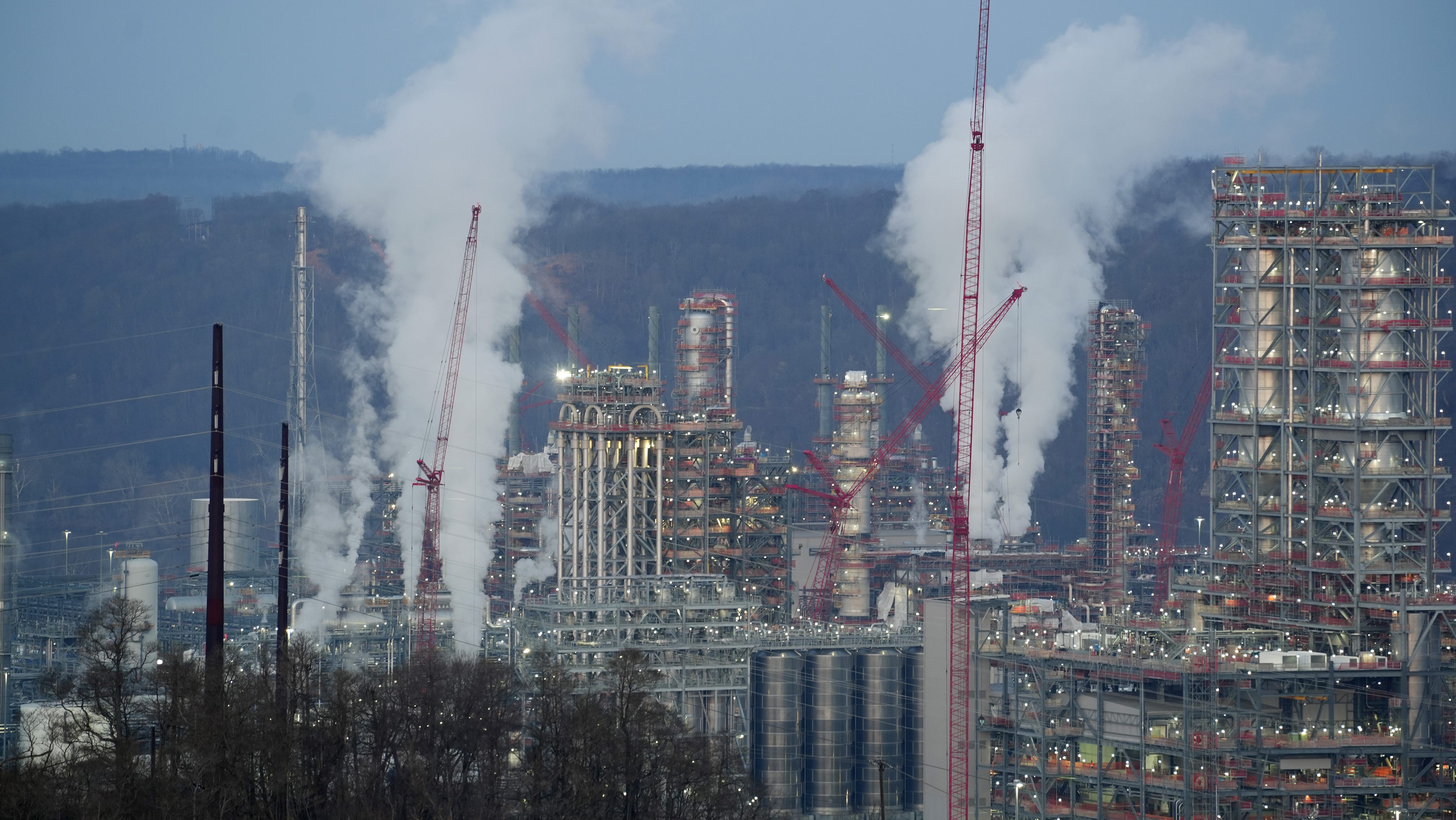
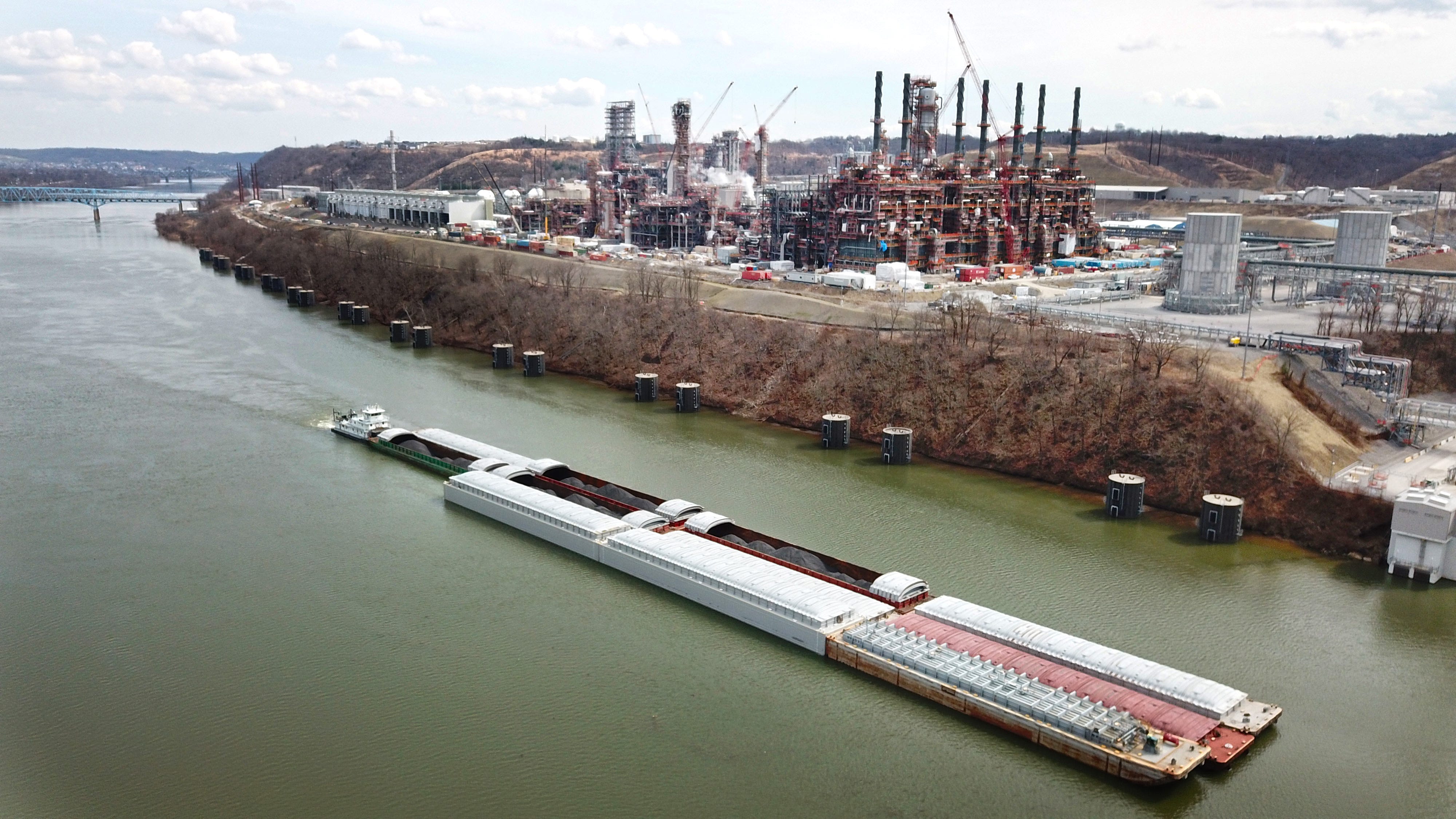
The space surrounding the former Horsehead zinc smelter showed a marked risk decline from the time it closed in April 2014 through Shell’s remediation project that lasted until late 2017, when construction started.
“It was good to clean up the smelter,” Begley said. “But I’m certainly not comfortable trading one for another. (Beaver County) traded the health and well-being of members of the community for what they believe is going to be some kind of boon on the industrial and economical side. People don’t understand what we’ve been traded for.”
Rosemary Stewart, 51, left her Bell Acres home on the border of Economy in 2018 after two decades, moving to State College with her husband for a new position at Penn State University.
Disturbed by an influx of fracking wells along Big Sewickley Creek Road and Shell’s Falcon Pipeline traveling near the reservoir supplying her family’s water, Stewart resigned from her job at the Quaker Valley School District and headed east. She worried that a renewed market for ethane, used as feedstock at Shell’s plant, would lead to new fracking wells in the region.
More: Falcon Pipeline whistleblowers ‘fired for reporting hazards,' complaint says
"It wasn’t just the physical presence of the cracker plant," Stewart said, acknowledging not everyone is able to afford relocation. "It was the truck traffic, the diesel fumes and the industrialization that would move in next door."
Denise Poole and her husband thought they’d live in their century-old Beaver house forever before learning about the cracker plant’s potential emissions. After educating herself on temperature inversions and connecting with environmental advocacy groups, the pair packed up and moved to Oakmont in Allegheny County.
Before leaving, she said she was startled by her neighbors’ resignation to the plant, calling their attitudes “surreal.”
“Nobody was concerned about it,” said Poole, 65. “People saw it happening, but it was like a 'Stepford Wives' situation. We just felt like we were at ground zero right here. I remember flying out of Pittsburgh, looking down and absorbing the enormity of it.”
Citizen science
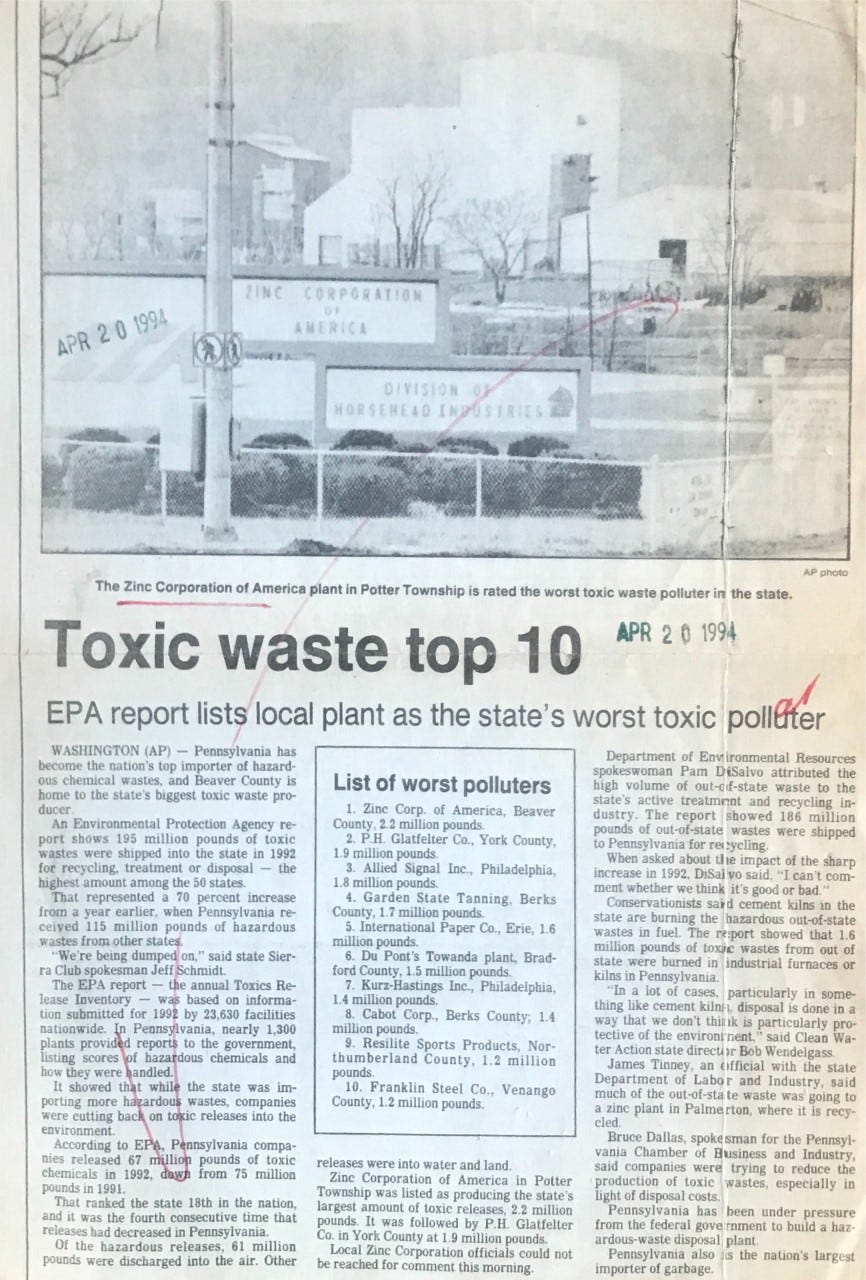
Terrie Baumgardner speaks with conviction to a grid of floating heads during a virtual “Eyes on Shell” meeting in April.
“Doing this together amplifies our voices,” said Baumgardner, Beaver County’s Clean Air Council outreach coordinator and a longtime environmental advocate.
She's speaking to countless others who have chosen to stay in Beaver County to monitor the plant and hold Shell accountable, participating in watchdog meetings and learning how to record and report air, water, light or sound violations at the plant. The group received a grant from the Center for Environmental Law to buy air monitors and lab analysis, with members of the Louisiana Bucket Brigade giving lessons on air sampling and other tools to document pollution.
More: Beaver County ‘preparing for petrochemicals’ as Shell cracker plant nears completion
Because Beaver County doesn’t have a county health department to monitor air quality and relies heavily on the state, activists have pushed Shell to do its part. In 2017, Shell reached an agreement with environmental groups to develop a supplemental air-monitoring program. The data collected is sent to a third-party laboratory for analysis, with results posted on the company’s website.
In March, a Beaver County Marcellus Awareness Community member revealed a 2,500-gallon sulfuric acid spill at the cracker plant while tracking oil and gas accidents on SkyTruth.
Shell had reported the incident to the federal National Response Center, but hadn’t informed the public until days later when activists issued a news release. The discharge was caught in a secondary containment tank and reportedly never left the site, but many asked why company representatives didn’t alert the community sooner.
More:Shell hit with violations for chemical odor in county
“It is critical that the public and all emergency agencies are notified immediately if any spills occur at the Shell plant,” BCMAC co-founder Bob Schmetzer said at the time. “We have to keep our guard up.”
'These plants do create a cluster'
Despite concerns, most residents appear to be staying put for now. Homes are selling fast; even Poole’s real estate agent thought they were “nuts” for moving, she said. The median sales price for a single-family home in January 2022 was $195,000, an 18.2% increase from the year prior. That fell to $174,900 in March, however, representing a 19.6% drop from the year prior.
When Shell finally committed to building its long-hyped ethane cracker plant in Potter, celebratory politicians scrambled to further laud their role in luring the company.
It was 2016, and Pennsylvania had won a four-year-long competition with Ohio and West Virginia for one of the nation’s largest manufacturing projects. News of Shell’s decision came two years after Gov. Tom Wolf beat former Gov. Tom Corbett in Pennsylvania's gubernatorial race. Wolf praised his and Corbett’s efforts to make the “game-changing” plant a reality. Even former President Donald Trump took credit for the investment during a 2019 tour of the site, despite Shell having announced the move months before Trump was elected.
Analysts once predicted as many as five ethane cracker plants would be built in Appalachia; a 2017 American Chemistry Council report estimated a whopping 100,000 jobs would be supported by a burgeoning four-state petrochemical hub.
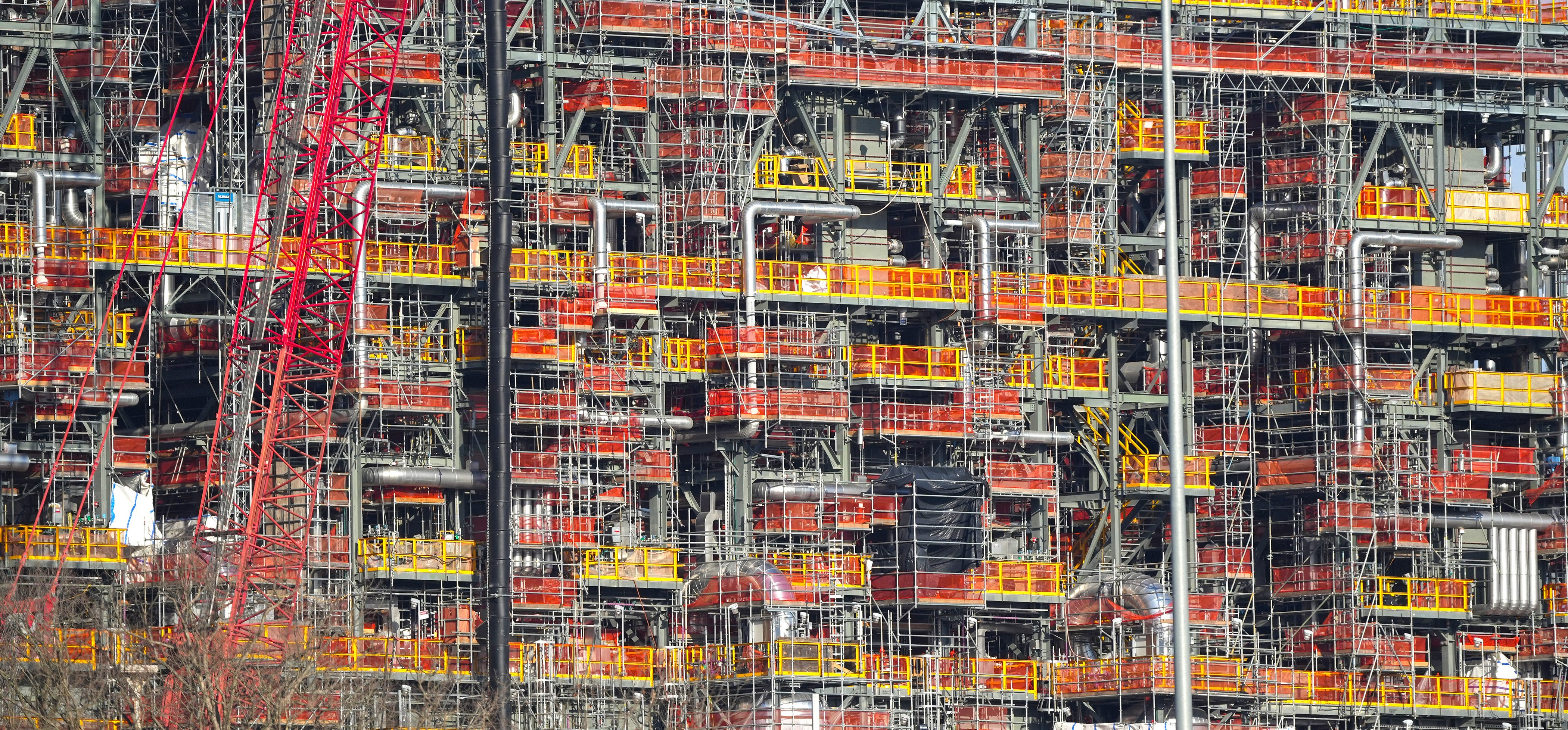
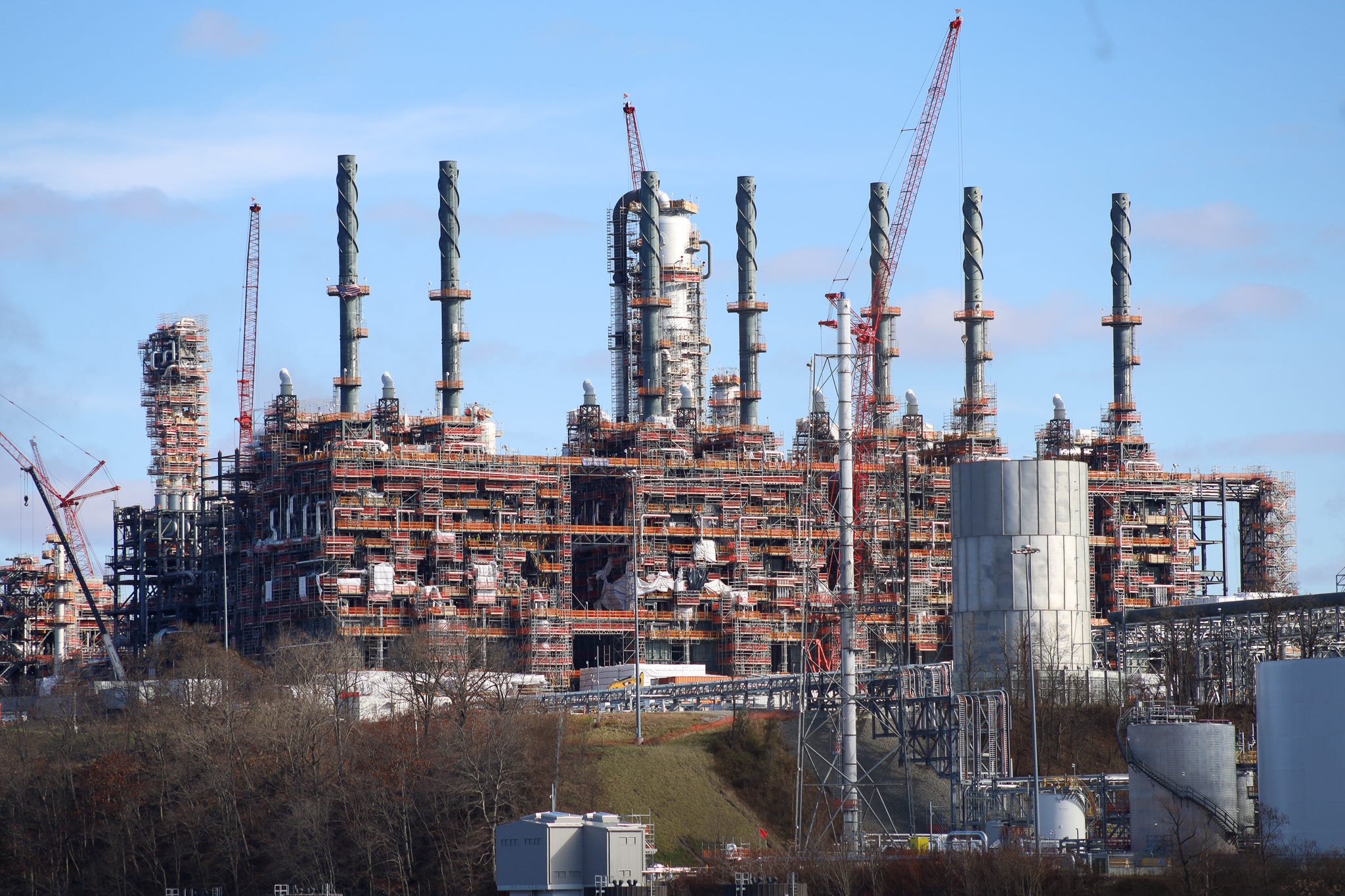
So far, only Shell’s Beaver County plant has pressed on. Proposals in neighboring states remain canceled or postponed, including in Ohio, where a PTT Global Chemical subsidiary recently repaid the state’s economic development agency $20 million after it further delayed an investment decision on the proposed Belmont County plant, the Associated Press reported.
Some economists are skeptical that Pennsylvania’s investment in Shell will, in fact, help usher the wider Ohio River Valley into a new era of growth. They say Pennsylvania overpaid – comparing Shell’s 600 jobs to that of electric car company Rivian Automotive, which recently scored $1.5 billion in Georgia tax credits to build a new plant employing as many as 7,500 permanent workers.

Locally, though, the focus is more centered.
The presence of as many as 8,500 construction workers buoyed Beaver County's job numbers for years, but the loss of those employees will reveal a new set of challenges for local leaders.
Shell’s cracker plant is expected to employ 600 full-time workers, about half of whom will live in Beaver County. While this offsets the 510 jobs lost to Horsehead Corp.’s idled zinc smelter, a horde of new hotels, rental properties and restaurants were built to meet the needs of Shell’s out-of-state construction crews. As lines get shorter and rooms sit empty in the coming months, Beaver County must adapt until the promised economic and population gain is fully realized.
“From a real estate perspective, I think we’ve had higher use because of the plant,” said Helen Kissick, president of the Beaver County Chamber of Commerce. “These workers are now leaving, so the question becomes, how do those units get occupied? Beaver County tourism is working hard to convert those overnight hotel stays from workers to new tourists.”
Early discussions involve putting Beaver County on an interstate trail network, improving marketing for existing attractions and converting hotels to senior housing, if necessary.
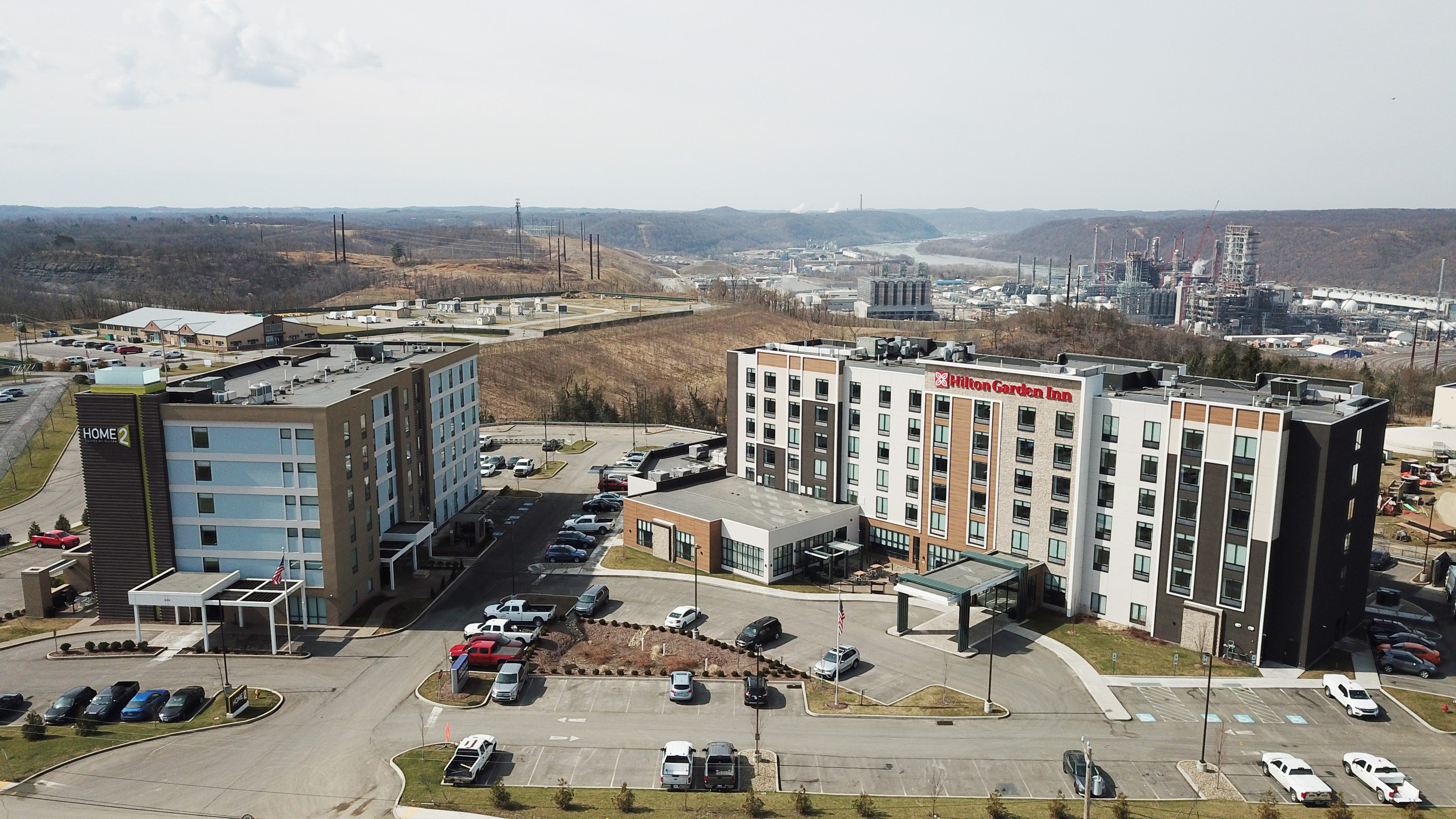
Beaver County Commissioner Jack Manning points to economic returns not measured in early data, including Heritage Valley and Allegheny Health Network's new facilities near the Beaver Valley Mall, and what he said is an uptick in inquiries about manufacturing space. Shell has elevated the region’s visibility, he said, and helped to funnel essential grant funding into struggling neighborhoods. One Robert Morris University study paid for by Shell estimated between $260 million and $846 million in economic activity would be generated locally each year.
Researchers with the Ohio River Valley Institute, a think tank focused on clean energy, called Shell's economic payoff in Beaver County “underwhelming” in a report released last year. The county’s median household income grew slightly faster than Pennsylvania’s from 2012 to 2019, but the number of businesses as defined by the U.S. Census Bureau decreased, they said. Beaver County has lost 20% of its population since 1970, although that decline has slowed in the past decade.
More: Critics, defenders debate cracker plant impact as project nears completion
In the decades following LyondellBasell’s arrival in Morris, Illinois, the rural county did see a notable bump in energy and manufacturing jobs, said Christina Van Yperen, Grundy County Chamber of Commerce president. The petrochemical complex, comparable to what Shell is building in Pennsylvania, was built in 1969 and now supports 580 full-time and contract employees. Van Yperen said LyondellBasell is an "invaluable" tax foundation for the county.
2021: Activists tell energy department to rein in regional ethane production
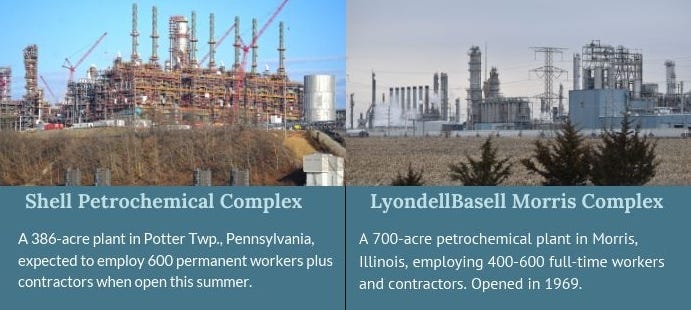
Shell won’t pay most state or local taxes for at least 15 years thanks to its legislative exemption, but the company did agree ― following negotiations with local lawmakers ― to pay Potter Township, Beaver County and nearby Central Valley School District 110% of the annual property taxes once paid by Horsehead.
Like Beaver County, Grundy sits near a network of interstate highways, rivers and an enduring nuclear power station. Unlike Beaver, though, Grundy County ― still with less than one-third of the population ― has seen steady growth.
“It’s helped to spur residential growth here,” Van Yperen said. “They are pulling people from other areas of the country because there’s not a strong engineering base here, so that brings more people to the community, too.”
Nancy Norton-Ammer, president of the Grundy Economic Development Council, said LyondellBasell’s petrochemical facility was partly responsible for attracting the Alliance Pipeline natural gas processing facility in nearby Aux Sable, and a major transport company that helps ship the company’s plastic pellets. This is, potentially, what's next for Beaver County, she said.
“These plants do create a cluster,” Norton-Ammer said.
Chrissy Suttles covers business, energy and environment for the Beaver County Times and the USAToday Network. Contact her at csuttles@gannett.com and follow her on Twitter @ChrissySuttles.
Stay informed: Download the Times app at https://app.adjust.com/tj0idhm?fallback=https%3A%2F%2Fcm.timesonline.com%2Fsubscriberguide%2F%23apps.